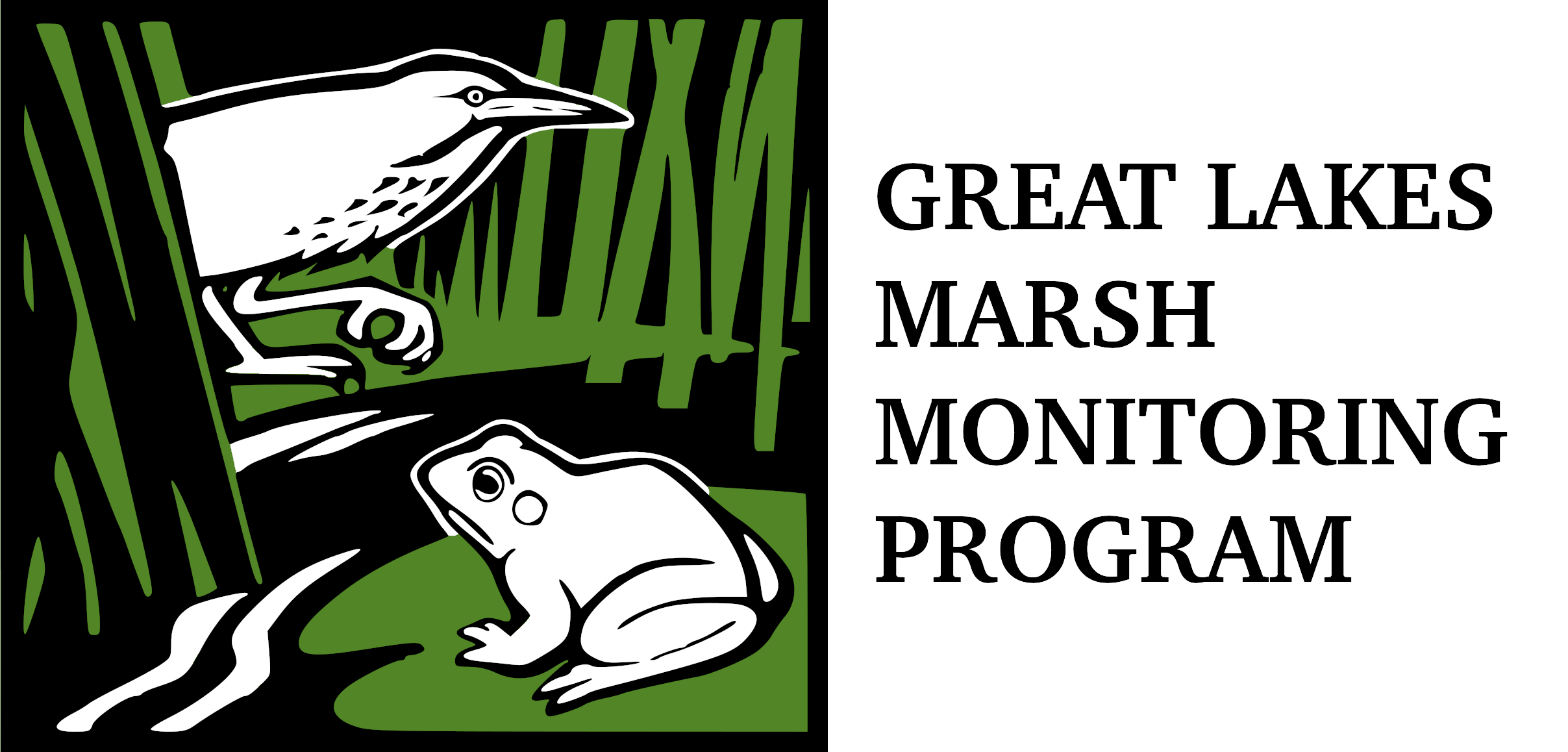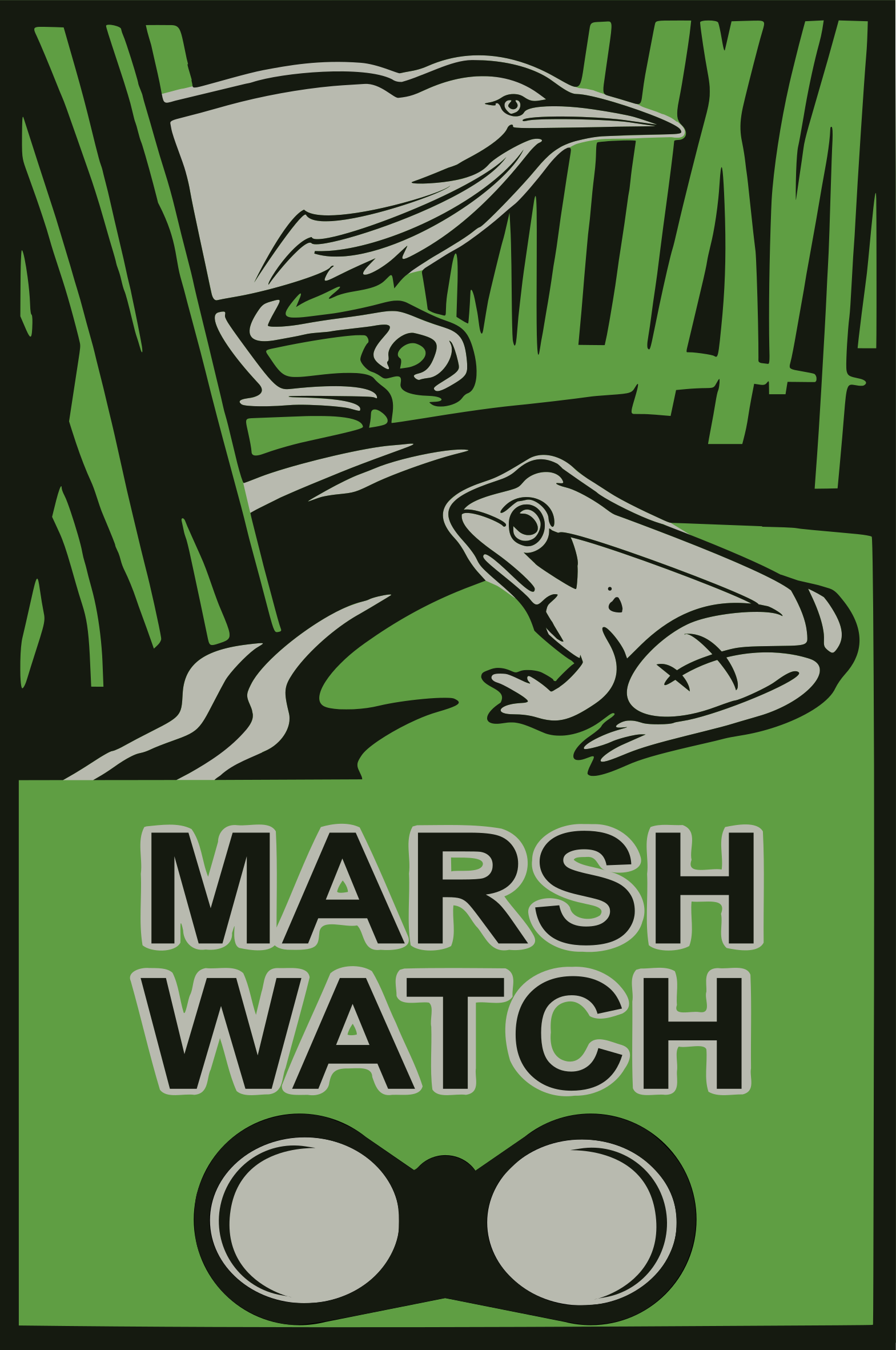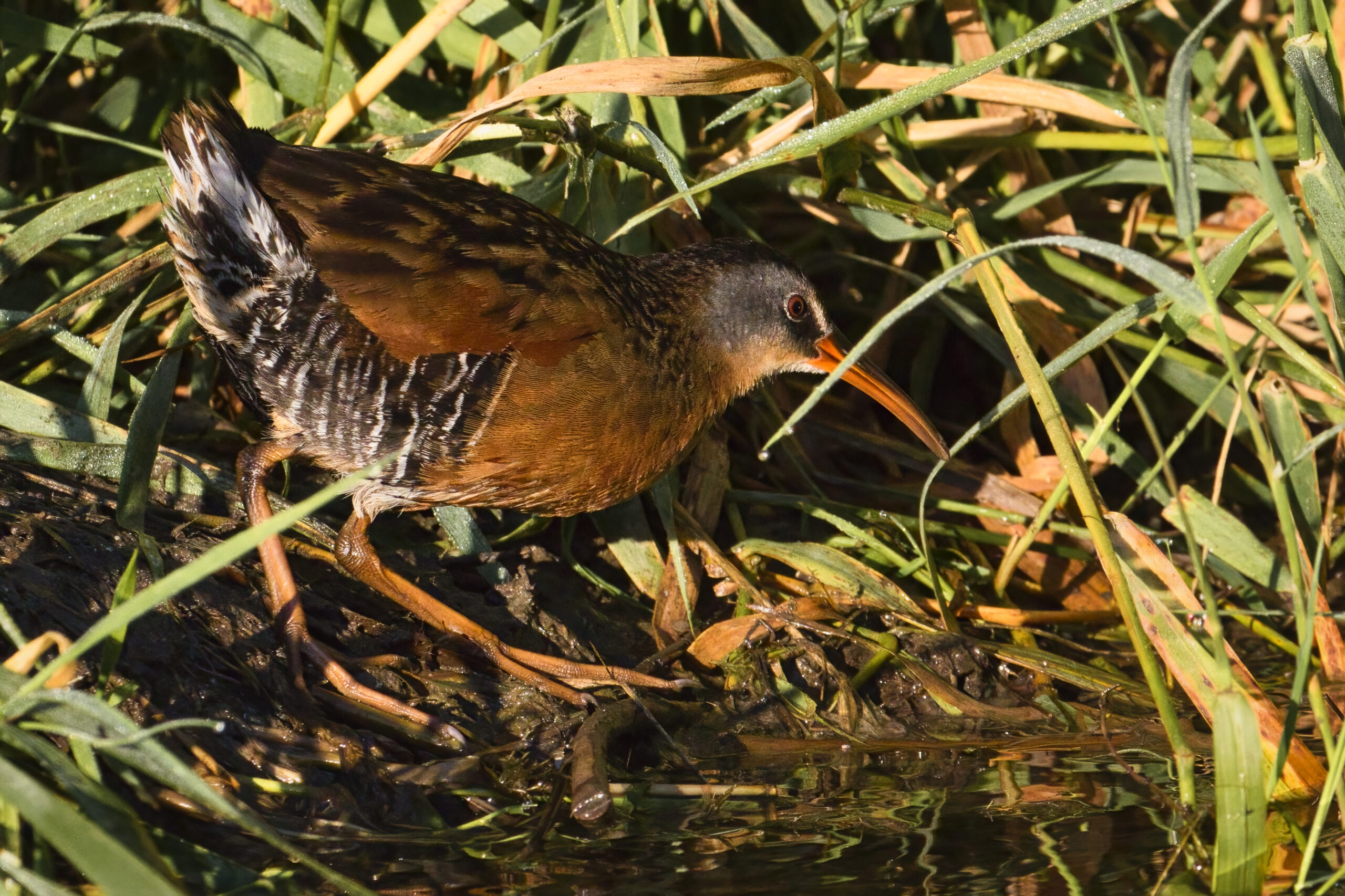Par Doug Tozer, Ph. D., directeur – Oiseaux aquatiques et milieux humides, Oiseaux Canada, et Kathy Jones, responsable des bénévoles et biologiste, Oiseaux Canada
Le bulletin annuel du programme, L’Écho des marais, présente les plus récents résultats du PSMGL. Ce numéro contient des douzaines de graphiques fascinants et d’illustrations, ainsi que des exemples des effets positifs du programme sur la protection de la faune et de la flore des milieux humides. Ainsi, les données du programme démontrent l’importance du rat musqué pour les oiseaux des marais, car les activités alimentaires de ce mammifère créent des mares d’eau libre à l’intérieur des épais tapis de végétation que la plupart des oiseaux des marais adorent. Malheureusement, les rats musqués sont de moins en moins nombreux, pour des raisons inconnues. Nous devons donc prendre des mesures pour garantir le maintien de cet aspect de l’habitat de haute qualité des oiseaux des marais.
L’édition de 2024 du PSMGL marquait sa trentième année, ce qui est digne de mention! C’est une durée impressionnante presque inédite dans le domaine de la surveillance de la faune et de la flore, et qui témoigne de la valeur du programme! Le programme existant depuis si longtemps, les résultats sont de plus en plus intéressants et de plus en plus utiles pour la conservation. Les données commencent à s’étendre sur plusieurs périodes de fluctuations des niveaux d’eau dans les Grands Lacs, ce qui permet de prédire comment les oiseaux et les anoures (rainettes, grenouilles et crapaud) réagiront à l’avenir aux niveaux d’eau extrêmes dus aux changements climatiques. Grâce à ces informations, nous pourrons prendre des mesures pour les aider à prospérer.
Le programme contribue également à la préservation des milieux humides et des espèces sauvages de multiples autres façons. Par exemple, ses données ont contribué à la production du rapport sur l’état des populations d’oiseaux du Canada, à orienter l’exécution de plans conjoints relatifs aux oiseaux migrateurs (voyez la section portant sur le Plan conjoint sur le Canard noir à la page 32 du Rapport annuel 2024 du Plan nord-américain de gestion de la sauvagine) et à soutenir la production du rapport sur l’état des Grands Lacs. Pour en savoir plus, prenez connaissance de l’infolettre du PSMGL.

Une Râle de Virginie repéré sur une route du PDMGL. Photo: Wayne Patzer
Le Programme de surveillance des marais d’Oiseaux Canada couvre tout le sud du pays, en Colombie-Britannique, dans les Prairies (2008-2012), dans la région des Grands Lacs, au Québec et dans les provinces Maritimes. Son succès est dû au dévouement des participants bénévoles et des coordonnateurs régionaux, qui consacrent généreusement leur temps et leurs efforts à la cause. Merci à tous! Pour obtenir de plus amples informations sur le programme, sa raison d’être et la façon d’y participer, cliquez ici.
Vous pourriez également être intéressés à participer à un programme pour débutants axé sur les oiseaux et amphibiens des milieux humides appelé MarshWatch (en anglais).



